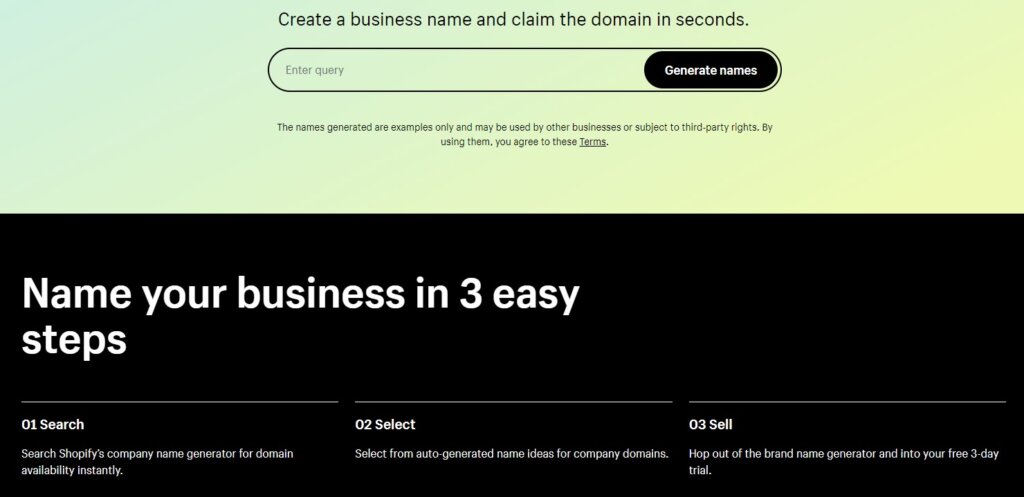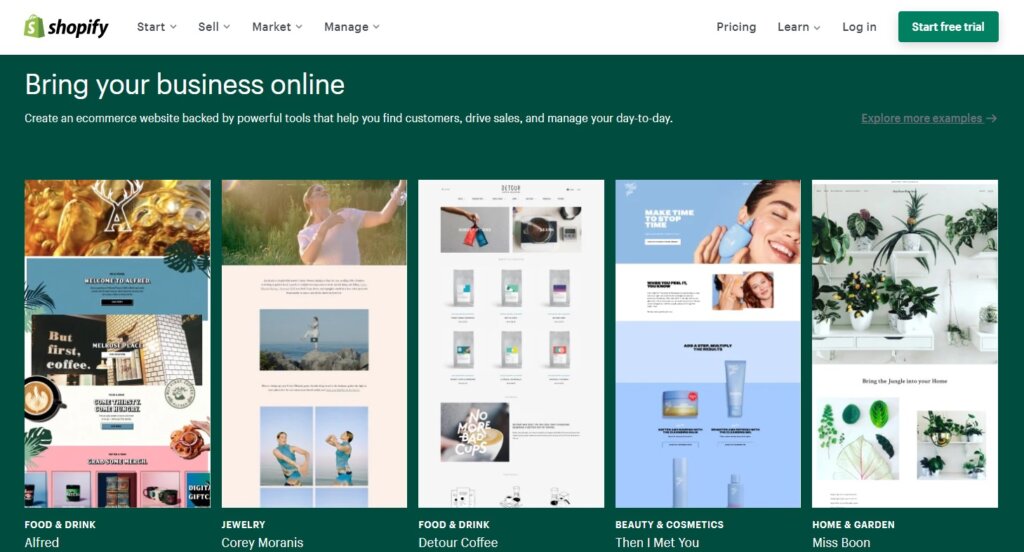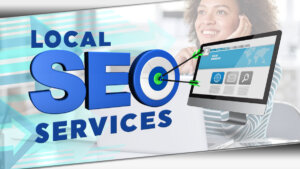Effective marketing is crucial for Shopify store owners looking to maximize their e-commerce success. It offers the benefit of increased brand visibility, targeted customer acquisition, higher conversion rates, and ultimately, improved sales and profitability.
In this comprehensive guide, we will explore the power of Shopify as a leading e-commerce platform and delve into proven marketing strategies that can help amplify your store’s visibility, attract customers, and drive sales.
Understanding Shopify Marketing
Shopify marketing encompasses the strategies and tactics employed to promote and grow a Shopify store’s online presence. It plays a vital role in driving traffic, boosting conversions, and ultimately generating revenue.
Shopify store owners can effectively reach their target audience, create brand awareness, and establish customer trust by leveraging various marketing channels. Examples include search engine optimization (SEO), social media marketing, content marketing, email marketing, and influencer partnerships.
Through compelling product descriptions, eye-catching visuals, targeted advertising campaigns, and personalized customer experiences, effective marketing strategies can drive not only increased website traffic but also higher conversion rates, leading to a significant boost in revenue for Shopify stores.
Crafting a Solid Marketing Strategy
Crafting a solid marketing strategy for your Shopify store is crucial for e-commerce success. Start by identifying your target audience, conducting market research, and setting clear goals.
Utilize a combination of social media, email marketing, content creation, influencer partnerships, and paid advertising to amplify your brand and drive traffic to your store.
Let’s study these in detail.
Defining Your Target Audience
To create an effective marketing strategy for your Shopify store, it is crucial to define your target audience. Start by identifying and understanding the characteristics, preferences, and needs of your ideal customers.
Conduct market research to gather insights into their demographics, interests, and shopping behaviors. Use this information to create buyer personas, which are fictional representations of your ideal customers.
These personas help you tailor your marketing messages and campaigns to resonate with your target audience, increasing the chances of attracting and retaining customers.
Branding and Storytelling
Developing a compelling brand identity is essential for standing out in the crowded e-commerce market. Define your brand’s unique value proposition and create a brand identity that aligns with your target audience’s preferences and aspirations.
Craft a consistent visual and verbal brand identity that includes your logo, color palette, typography, and tone of voice. Furthermore, leverage storytelling techniques to engage and connect with your customers on an emotional level.
Share your brand’s story, mission, and values through your website, social media posts, and product descriptions, creating a deeper connection with your audience.

Website Optimization
A well-optimized website is vital for a successful Shopify marketing strategy. Focus on improving the user experience by ensuring easy navigation, fast loading times, and mobile responsiveness.
Optimize your website for search engines by implementing effective on-page SEO strategies, such as optimizing meta tags, using relevant keywords, and creating quality content. Additionally, employ conversion rate optimization techniques to enhance your website’s performance in converting visitors into customers.
This includes optimizing product pages, implementing clear calls-to-action, simplifying the checkout process, and utilizing persuasive copywriting to drive conversions.
Content Marketing
Content marketing holds immense power in driving traffic to your Shopify store and building brand authority. By creating engaging and valuable content, such as blog posts, videos, and infographics, you can attract and retain your target audience.
Develop a content strategy that aligns with your target audience’s interests and pain points. Focus on providing solutions, insights, and entertainment that will resonate with them.
Consistently publish high-quality content on your website, optimize it for search engines, and share it across relevant channels to increase visibility and establish your brand as an industry authority.
Social Media Marketing
Social media platforms offer a valuable opportunity to promote your Shopify store and engage with your target audience. Identify the social media channels where your audience is most active and develop a social media marketing strategy.
Create compelling and shareable content that showcases your products, tells your brand’s story, and sparks conversations. Build a community by engaging with your followers, responding to comments and messages, and fostering meaningful interactions.
Utilize social media advertising to reach a wider audience, target specific demographics, and drive traffic to your store.
Email Marketing
Email marketing remains a powerful tool for nurturing leads and driving sales for your Shopify store. Build a subscriber list by offering incentives such as exclusive discounts or valuable content in exchange for email sign-ups.
Craft engaging email content that provides value to your subscribers, such as personalized product recommendations, informative newsletters, or limited-time offers. Utilize email automation to send targeted emails based on customer behavior and preferences.
By segmenting your email list and delivering relevant content, you can effectively nurture leads, increase customer loyalty, and drive repeat purchases.
Influencer and Affiliate Marketing
Influencer and affiliate marketing can be powerful strategies for expanding your reach and driving conversions for your Shopify store.
Leverage the influence of industry influencers by identifying those who align with your brand and have a significant following within your target audience.
Establish partnerships with these influencers to promote your products or services, either through sponsored content or product collaborations.
Similarly, affiliate marketing involves partnering with affiliates who receive a commission for driving sales to your store through their unique tracking links.
By creating mutually beneficial promotional campaigns with influencers and affiliates, you can tap into their audience and gain credibility, ultimately increasing brand awareness and driving sales.
Paid Advertising
Paid advertising offers a targeted and scalable approach to reach your audience and drive traffic to your Shopify store.
Platforms like Google Ads, Facebook Ads, and Instagram Ads provide a range of options to promote your products or services. Begin by setting clear campaign goals and defining your target audience.
Conduct thorough keyword research and audience targeting to optimize your ad campaigns and maximize return on investment (ROI). Utilize compelling ad copy, eye-catching visuals, and relevant landing pages to drive conversions.
Regularly monitor and optimize your ad campaigns by adjusting budgets, targeting, and ad creatives to ensure optimal performance and reach your desired audience effectively.
Analytics and Measurement

In the world of e-commerce, data is king. To maximize your marketing efforts on Shopify, it is essential to track and analyze key performance metrics that provide insights into the effectiveness of your strategies.
By leveraging the power of analytics and measurement, you can gain a deeper understanding of your audience and make data-driven decisions to optimize your marketing efforts. Here are some of the ways that you can utilize tools and platforms to gain valuable insights.
Establishing Key Performance Indicators (KPIs)
KPIs are measurable goals that align with your overall marketing objectives. They help you gauge the success and impact of your marketing activities.
Common e-commerce KPIs include conversion rate, average order value, customer lifetime value, website traffic, and customer acquisition cost. By setting clear KPIs, you can focus your analysis on the metrics that truly matter to your business.
Utilizing Shopify Analytics
Shopify provides built-in analytics features that allow you to track and measure various performance metrics. The Shopify Analytics dashboard offers a comprehensive overview of your store’s performance, including sales, traffic, and customer behavior.
You can monitor real-time data, identify trends, and assess the effectiveness of your marketing campaigns.
Implementing Google Analytics
While Shopify Analytics provides valuable data, integrating Google Analytics with your Shopify store can offer more advanced tracking capabilities and deeper insights.
Google Analytics provides a wealth of information about your website visitors, their behavior, and the effectiveness of your marketing channels. This data will help you refine your marketing strategies and identify areas for improvement.
Utilizing Marketing Automation and CRM Tools
Marketing automation and customer relationship management (CRM) tools play a crucial role in tracking and analyzing customer data.
Tools like Mailchimp, Klaviyo, or HubSpot allow you to segment your audience, personalize your marketing campaigns, and measure the performance of your email marketing efforts. These insights enable you to refine your messaging and tailor your marketing strategies to specific customer segments.
A/B Testing and Conversion Rate Optimization
Analytics and measurement go hand in hand with A/B testing and conversion rate optimization (CRO). A/B testing involves comparing two versions of a webpage, email, or ad to determine which one performs better.
Testing different elements, such as headlines, images, call-to-action buttons, or pricing, can help you gather data-driven insights to improve your conversion rates.
With tools like Google Optimize or Optimizely, you can set up and analyze A/B tests to optimize your marketing campaigns and drive higher conversions.
Leveraging Social Media Insights
If you’re running social media marketing campaigns to promote your Shopify store, it’s essential to analyze the performance of your social media efforts.
Platforms like Facebook, Instagram, and Twitter provide built-in analytics tools that offer valuable insights into your audience demographics, engagement metrics, and campaign performance.
By monitoring these metrics, you can identify which social media channels are driving the most traffic and conversions, allowing you to allocate your resources effectively.
Retention and Customer Loyalty
Customer loyalty plays a vital role in the long-term success of your Shopify store. Repeat customers not only bring in consistent revenue but also serve as brand advocates, helping you expand your customer base through positive word-of-mouth.
To foster customer loyalty and drive repeat purchases, it is crucial to implement effective retention tactics. some strategies that can help you build customer loyalty and encourage customers to come back for more include:
Personalized Recommendations
One of the most powerful ways to enhance customer loyalty is by providing personalized recommendations. Shopify offers integrations like “Frequently Bought Together” to display relevant product recommendations on your product pages and in follow-up emails.
These personalized recommendations will increase the chances of repeat purchases by showcasing products that are likely to resonate with each customer.
Loyalty Programs
Implementing a well-designed loyalty program can be a highly effective strategy for fostering customer loyalty and incentivizing repeat purchases. Loyalty programs reward customers for their continued support and engagement with your brand.
There are different types of loyalty programs you can consider, such as points-based systems, tiered programs, or VIP programs.
Excellent Customer Service
Providing exceptional customer service is a fundamental aspect of building customer loyalty. When customers have a positive experience with your brand, they are more likely to become repeat customers and recommend your store to others.
To deliver excellent customer service, focus on responsiveness, attentiveness, and problem-solving. Ensure that customers can easily reach you through multiple channels, such as live chat, email, or phone. Respond promptly to inquiries and address any concerns or issues with empathy and professionalism.
Personalized Email Campaigns
Use customer data and segmentation to create targeted email campaigns that deliver personalized content, product recommendations, exclusive offers, and loyalty rewards. Engage customers with relevant and timely messages to increase their loyalty and encourage repeat purchases.
Product Reviews and User-Generated Content
Encourage customers to leave reviews and share their experiences with your products. Display these reviews prominently on your website to build trust and social proof.
Additionally, consider leveraging user-generated content (UGC), such as customer photos and videos, to showcase the benefits and quality of your products.
Exclusive Content and Offers
Provide exclusive content, such as educational resources, tutorials, or insider tips, to your loyal customers. Additionally, offer exclusive promotions, early access to new products, or limited-time discounts. By making customers feel valued and privileged, you can strengthen their loyalty.
Social Media Engagement
Actively engage with your audience on social media platforms. Respond to comments, messages, and mentions promptly. Encourage customers to share their experiences and tag your brand. By building a community and fostering conversations, you can increase brand loyalty and advocacy.
Retargeting and Abandoned Cart Recovery
Utilize retargeting campaigns to reach out to customers who have shown interest in your products but haven’t made a purchase.
Set up automated abandoned cart recovery emails to remind and incentivize customers to complete their purchases. By re-engaging potential customers, you can recover lost sales and nurture loyalty.
Staying Ahead of Competition
Saying ahead of the competition is essential for the success of your Shopify store. With new trends and innovations constantly emerging, it’s crucial to keep up with the latest developments in Shopify marketing.
Additionally, implementing strategies for continuous improvement will ensure that your e-commerce business remains competitive and continues to grow. Here are some tips to help you:
Stay Updated on the Latest Trends and Innovations in Shopify Marketing
To stay ahead of the competition, it’s crucial to keep yourself informed about the latest trends and innovations in Shopify marketing.
Follow industry leaders, Shopify blogs, and relevant social media channels to stay updated on the newest strategies, techniques, and tools. Attend webinars, conferences, and workshops to gain insights from experts and network with other e-commerce professionals.
By staying informed, you can leverage new opportunities and implement effective marketing techniques ahead of your competitors.
Analyze Competitor Strategies
Keep a close eye on your competitors to understand their marketing strategies. Analyze their online presence, social media activities, email marketing campaigns, and content strategies. Identify what works well for them and adapt those strategies to fit your brand.
This competitive analysis will help you gain insights into the market and identify areas where you can differentiate yourself.
Optimize Your Website and User Experience
A well-optimized website is crucial for staying competitive in the e-commerce landscape. Ensure that your Shopify store loads quickly is mobile-responsive, and offers an intuitive user experience.
Optimize your product pages with compelling descriptions, high-quality images, and customer reviews. Implement easy navigation, a streamlined checkout process, and secure payment options to enhance the overall user experience.
Regularly test and optimize your website to ensure it meets the evolving needs and expectations of your customers.
Personalize Customer Experiences
Personalization is key to standing out from the competition and building strong customer relationships. Leverage customer data and analytics to understand your audience better.
Use this information to segment your customer base and deliver personalized marketing messages, product recommendations, and offers.
Consider implementing tools like email marketing automation and AI-powered chatbots to provide personalized experiences at scale.
Leverage Social Media Marketing
Social media platforms are powerful tools for e-commerce businesses to reach and engage with their target audience. Develop a comprehensive social media marketing strategy that aligns with your brand identity and target market.
Create compelling content, engage with your followers, and leverage influencer partnerships to amplify your reach. Stay up-to-date with the latest social media trends and features to make the most of your social media presence.
Implement Effective Email Marketing Campaigns
Email marketing remains one of the most effective channels for driving customer engagement and conversions.
Build a strong email list and segment your subscribers based on their preferences and behaviors. Craft compelling email campaigns with personalized content, attractive visuals, and clear call-to-actions.
Experiment with different email types, such as abandoned cart reminders, product recommendations, and exclusive offers, to nurture your leads and drive repeat purchases.
Embrace Content Marketing
Content marketing is an essential strategy for building brand awareness, establishing thought leadership, and driving organic traffic to your Shopify store. Create valuable and informative content that resonates with your target audience.
Develop a blog, produce videos, or start a podcast to share insights, industry news, and helpful tips related to your products or niche. Invest in search engine optimization (SEO) to ensure your content ranks well in search engine results.
Continuously Test, Measure, and Improve
To stay competitive, it’s crucial to continuously test your marketing strategies, measure their performance, and make data-driven improvements.
Analyze the key metrics that align with your business goals, such as conversion rates, customer acquisition costs, and customer lifetime value.
Implement A/B testing to compare different variations of your marketing campaigns and website elements to identify what resonates best with your audience.
Frequently Asked Questions
Have more questions? Here are the most frequently asked questions on Shopify e-commerce and the answers to them:
Conclusion
This comprehensive guide has explored the key strategies and techniques for successful Shopify marketing.
By implementing a visually appealing website design, optimizing product descriptions, utilizing targeted marketing, offering personalized experiences, and streamlining the checkout process, merchants can amplify their e-commerce success.
It is crucial to adopt a comprehensive marketing approach, leveraging the tools and features provided by Shopify, to unlock the full potential of your online store and achieve sustainable growth in the competitive e-commerce landscape.
 Sections of this topic
Sections of this topic
















